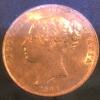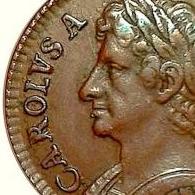While provenance and pedigree will always carry a premium it is terribly important to grade accurately when assessing value. The two examples sold through LCA were accurately graded by them as 'bold fine' and 'better than fine and bold', though the latter had inexplicably been rebadged as near extremely fine when offered for sale by Coins and Banknotes. If you compare your own coin with the two LCA coins you will see immediately it had been overgraded when sold to you as 'a bold fine'. My own assessment of your farthing would be no higher than very good (VG).
With regards to scarcity, these are not the 'extremely rare' variety they were once thought to be and while those in grades above fine will always be sought after and achieve decent prices mediocre examples are not difficult to find. I have five 1673 no obverse stops farthings in grades fair to very fine+ and with both reverse dies for normal and wide dates. Joe Lee (farthingshalfpennyerrors.com) also has five in grades good fair to good fine+.
As for value, my advice would be look to the LCA sales and adjust downward accordingly. There's one on eBay (wide date), which is a little better than yours, being offered for £190 but the listing has been there forever and I doubt it will sell at that price. You'll see I've included photos of three of my five with this mail. These I grade 1) near fine 2) bold fine 3) very fine+. Last year I had the near fine coin listed on eBay starting at what I considered a very fair £95. After several months of no interest, and after having reduced the price to £75, I cancelled the listing.
 Coinpublications.com
Coinpublications.com





